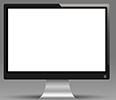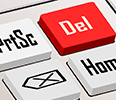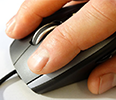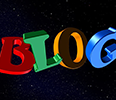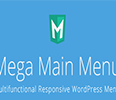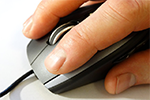The Psychology of Web Design: How Colors, Fonts, and Layout Impact User Perception
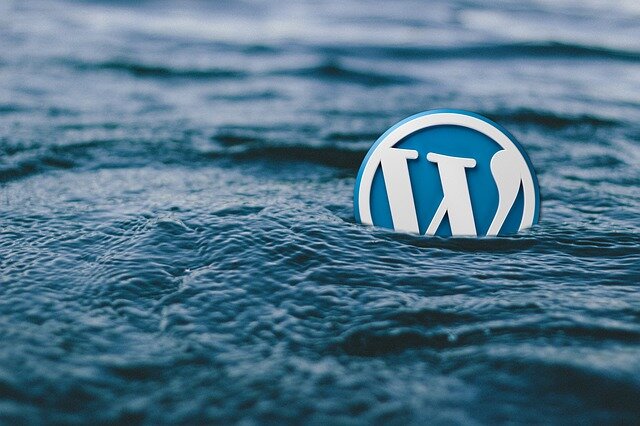
Navigating a website is more than a visual experience; it's a silent dialogue between the user and intentional design decisions. Beyond aesthetic appeal, web design is the art of understanding the user's psyche. Each color, font, and layout is chosen with precision, reflecting the nuances of human perception. Just as authors craft narratives for readers' emotions, web designers shape sites for users' virtual journeys. This isn't merely about creating a digital space but sculpting a realm where design and psychology merge. Dive with us into this profound connection, aiming for enhanced user experiences that go beyond the realm of pre written essays.
Behind Every Pixel: The Hidden Psychology Driving User Actions
Ever wondered why some websites draw us in, while others repel? The key often lies in underlying psychological principles seamlessly woven into design. Psychology, deciphering mind and behavior, underpins effective web design. Sites are more than static entities; they converse, entice, and even challenge. Savvy designers leverage psychology to craft immersive experiences.
Take the principle of recognition over recall. Users find it simpler to recognize familiar information than retrieve it from memory. Hence, top sites maintain consistent layouts, facilitating effortless navigation. Such guiding principles silently enhance user engagement.
Emotions are central to user experience. Feel an adrenaline rush or serenity upon website entry? These responses are meticulously sculpted through chosen colors, fonts, and images, collectively sparking precise emotions.
As we advance, we'll dissect design facets—color palettes, typography, structures—to unveil their connection to cognitive functions and emotional triggers. Marrying design with psychological insights elevates mere web spaces into profound user odysseys.
A Palette of Emotions: How Colors Craft User Experience
Colors aren't mere embellishments; they're narratives shaping emotions and actions on a webpage. For skilled web designers, understanding color theory's psychological underpinnings is essential. Warm hues like red exude passion, while cool shades such as blue signify calm. However, color perceptions shift with intensity and cultural contexts. A vibrant red screams attention, think e-commerce 'Sale' tags, whereas a softer shade evokes nostalgia.
Culture adds another layer. For instance, while the West views white as pure, certain Asian cultures associate it with mourning. Consider the calming blue of a meditation app versus the lively yellow of a fast-food site. These aren't random picks but strategic decisions to boost user experience and cement brand image.
Web colors transcend aesthetics. They're carefully chosen actors in a play, tasked to evoke emotions and direct user experiences. As we proceed, we'll explore the interplay between typography and color. But for now, hats off to colors, the subtle maestros of our digital journey.
The Art of Lettering: How Typography Speaks Louder Than Words
Typography transcends mere legibility on a webpage; it sets the mood, directs the eye, and amplifies a brand's identity. Delving into its intricacies reveals a world beyond just selecting appealing fonts. It's about harmonizing spacing, maintaining hierarchy, and achieving balance. Serif fonts exude tradition and reliability, while sans-serif fonts offer a sleek, modern vibe fit for contemporary brands.
However, digital readability reigns supreme. While ornate fonts might dazzle as logos, they can hinder reading in longer texts. Hence, decorative fonts often grace headers, preserving clarity in the main content. But typography's magic isn't just about clarity—it echoes brand identity. The whimsical typeface of a toy brand or the refined elegance of a luxury brand aren't arbitrary; they're deliberate reflections of the brand's core.
While colors evoke emotions, typography weaves the brand narrative, directing users, highlighting content, and offering rhythm. In web design's orchestration, if colors are melodies, typography is the steady rhythm underpinning them. As we venture into layouts, it's crucial to realize that typography synergizes with colors, images, and spaces, forming a unified user experience. Thus, a webpage's font choice isn't serendipitous—it's a strategic design move, articulating stories even in its quietude.
Mapping the Digital Maze: Layouts that Lead and Engage
In the expansive digital realm, effective web layouts ensure users navigate seamlessly, feeling oriented and engaged. Layouts aren't just about element placement; they emphasize information hierarchy. For instance, the 'F' pattern aligns with users' natural eye movement, scanning horizontally before vertically. The grid system promotes organized content placement, making every element feel intentional.
Central to this is User-Centered Design (UCD) – a philosophy emphasizing user needs and feedback. While a website showcases a designer's flair, its pathways and markers prioritize user ease. Navigation is crucial. Well-designed tools, like menus or search bars, act as guiding lights in the digital labyrinth.
Determining content hierarchy blends brand goals with user expectations. Essential information and CTAs stand out prominently, while supplementary content remains accessible yet unobtrusive. Crafting intuitive layouts merges art with science, necessitating an understanding of human behavior, aesthetic appreciation, and compelling narration. As we explore case studies ahead, we'll observe this synergy in practice. For now, let's recognize layout design's pivotal role in refining our digital encounters, creating immersive, coherent, and memorable experiences.
Blueprints of Brilliance: Deconstructing Web Design Masterpieces
In web design, studying exceptional sites offers a wealth of knowledge on user engagement and conversion. For instance, a famous streaming service's homepage seems straightforward, but its use of contrast, compelling imagery, and a clear call to action is an art in driving user actions. Similarly, a leading e-commerce platform's design, from reassuring green ticks to urgency indicators, is steeped in user psychology, aiming to optimize sales.
Yet, lessons aren't exclusive to giants. An indie photography blog boasts a unique masonry grid layout and muted background, making vibrant photos pop. This emphasizes how content and audience comprehension can guide design, regardless of scale.
It's the holistic interplay of colors, typography, and layout, rooted in user psychology, that creates a memorable user experience. For budding designers or aficionados, analyzing these successful platforms uncovers design subtleties and innovative strategies. While it's crucial to forge one's distinct path, grasping these foundational principles can be invaluable.
As we segue into tips and emerging trends, it's vital to recognize that design isn't about imitation but about comprehending, adapting, and crafting a narrative tailored to your brand and its audience.
Design Decoded: Crafting Your Digital Odyssey
Navigating the vast world of web design might appear daunting, but with the right tools and insights, it transforms into a creative haven. As you embark on this journey, here's a condensed guide to illuminate your path:
- Dive into psychology. Grasp user motivations and aspirations. This foundation ensures designs that captivate and connect.
- Usability first. While creativity is vital, user-friendly designs with clear navigation are paramount.
- Stay informed. The dynamic realm of web design demands continuous learning. Engage with industry blogs, workshops, and online communities.
- Cherish feedback. Constructive criticism refines and elevates your work. Embrace it.
- Master your tools. Proficiency in essential software and platforms transforms concepts into reality.
- Marry aesthetics with purpose. Design trends are enticing, but their relevance to user experience is crucial.
- Champion responsiveness. In today's diverse device landscape, designs must shine across all screens.
- Sketch first. Drafting ideas on paper before creating the digital work fosters clarity and effectiveness.
- Narrative crafting. Every site narrates a story. Ensure each design element complements this narrative.
- Continuous learning. The digital sphere is vast and evolving. Stay curious, engage in courses, and immerse yourself in the design community.
As we gaze at upcoming trends, recall that web design transcends aesthetics. It's about curating experiences and narrating tales. With these insights, you're not just a designer but a digital storyteller, poised to paint on the vast canvas of the web.
Navigating Tomorrow: Unfolding the Future Canvas of Web Design
The digital realm, ever-evolving, beckons us to anticipate the transformative trends shaping web design's future:
- Fluid Design for All Devices. Beyond desktops, myriad devices require designs that ensure seamless user experiences across diverse screen sizes. Adaptive design intensifies this, offering device-specific experiences.
- Prioritizing Inclusivity. The modern web emphasizes accessibility. Enhanced contrasts, screen reader compatibility, and intuitive voice commands champion a universally accessible web.
- 3D & Immersion. As AR and VR mature, expect a multi-dimensional web. Integration of 3D elements and immersive spaces promises engaging user exploration.
- AI-driven Personalization. Websites will harness AI to deliver custom-tailored experiences, enhancing user engagement and conversion.
- Interactive Minimalism. Minimalistic designs will merge with interactive elements—animations, hover effects, and dynamic visuals—enriching user engagement.
- Voice & Gesture Revolution. As voice assistants become ubiquitous, websites will adapt to voice commands. Soon, air swipes or nods might navigate the web.
- Dynamic Augmented Interfaces. Envision a product image offering a 360° view or live article previews. Such dynamic interfaces promise unparalleled user interactions.
- Eco-conscious Web. As sustainability takes center stage, the 'green website' concept, optimized for energy efficiency, will rise.
- Blockchain Beyond Currency. Blockchain will redefine web design with decentralized platforms, bolstered security, and innovative data handling.
In this technological renaissance, a guiding principle persists: user-centricity. Designers, armed with these trends, have the thrilling task of shaping the web's next innovative chapter.
The Digital Tapestry: Weaving Tomorrow's Web Today
Our exploration of web design's dance with psychology has been revealing. From the color palettes sparking emotion to the typography's storytelling rhythm, each design choice matters. Websites, akin to architectural marvels, guide users effortlessly. We've analyzed masterful designs, gauging the ethos behind their success while forecasting emerging trends in the field. This journey illuminated web design as not just pixel arrangements but a harmonized collaboration. For emerging designers: you're the weavers of the web's evolving tapestry. Harness your knowledge, stay curious, and let your innovations shape tomorrow's digital narratives.

